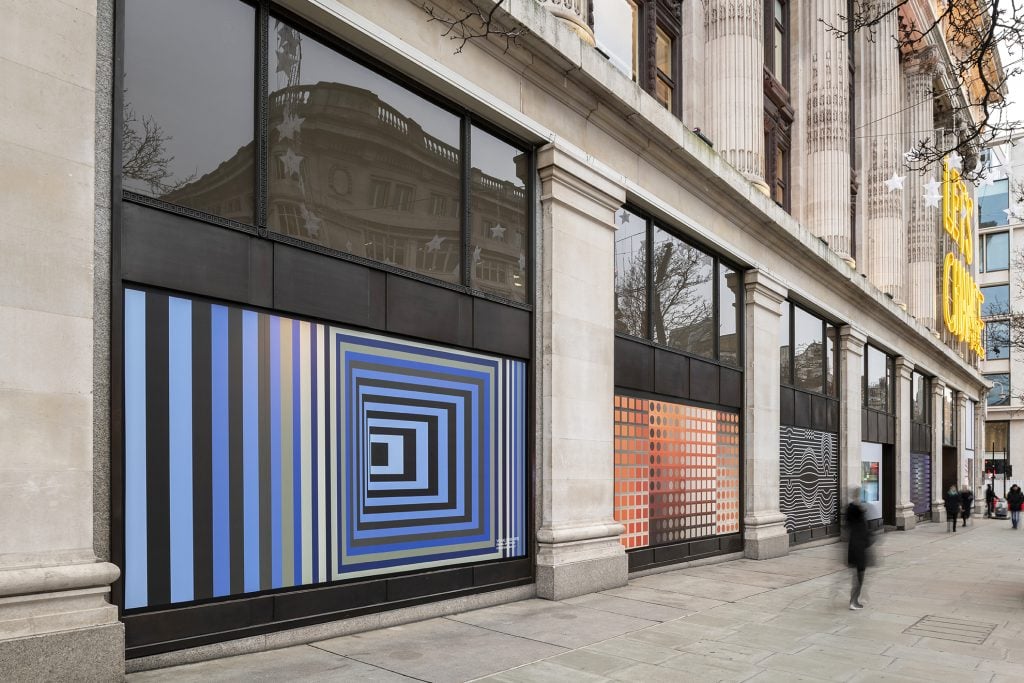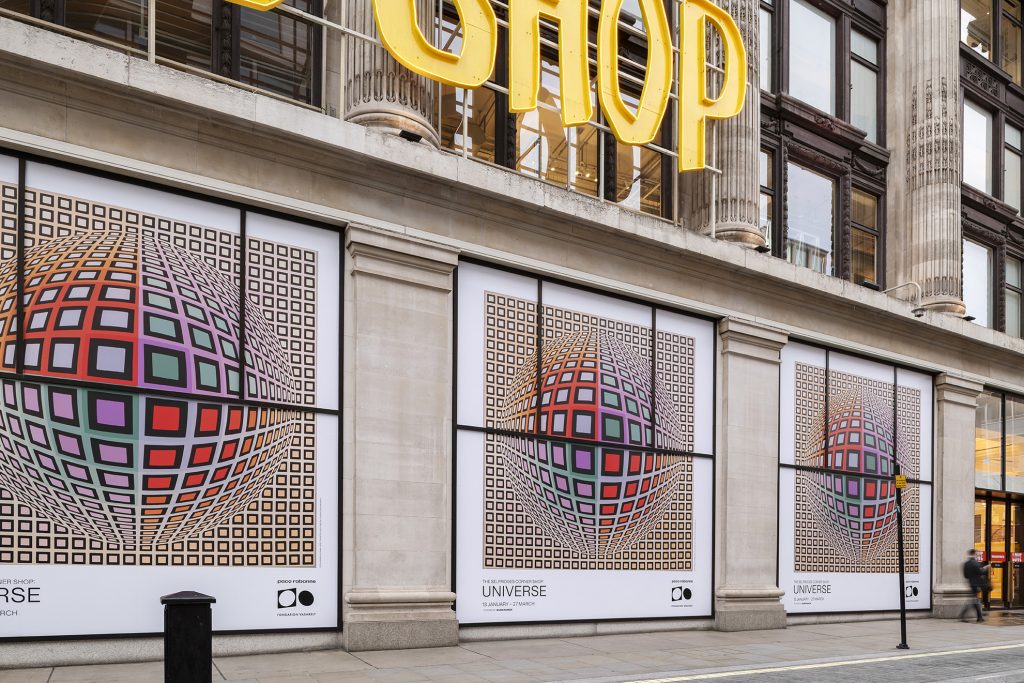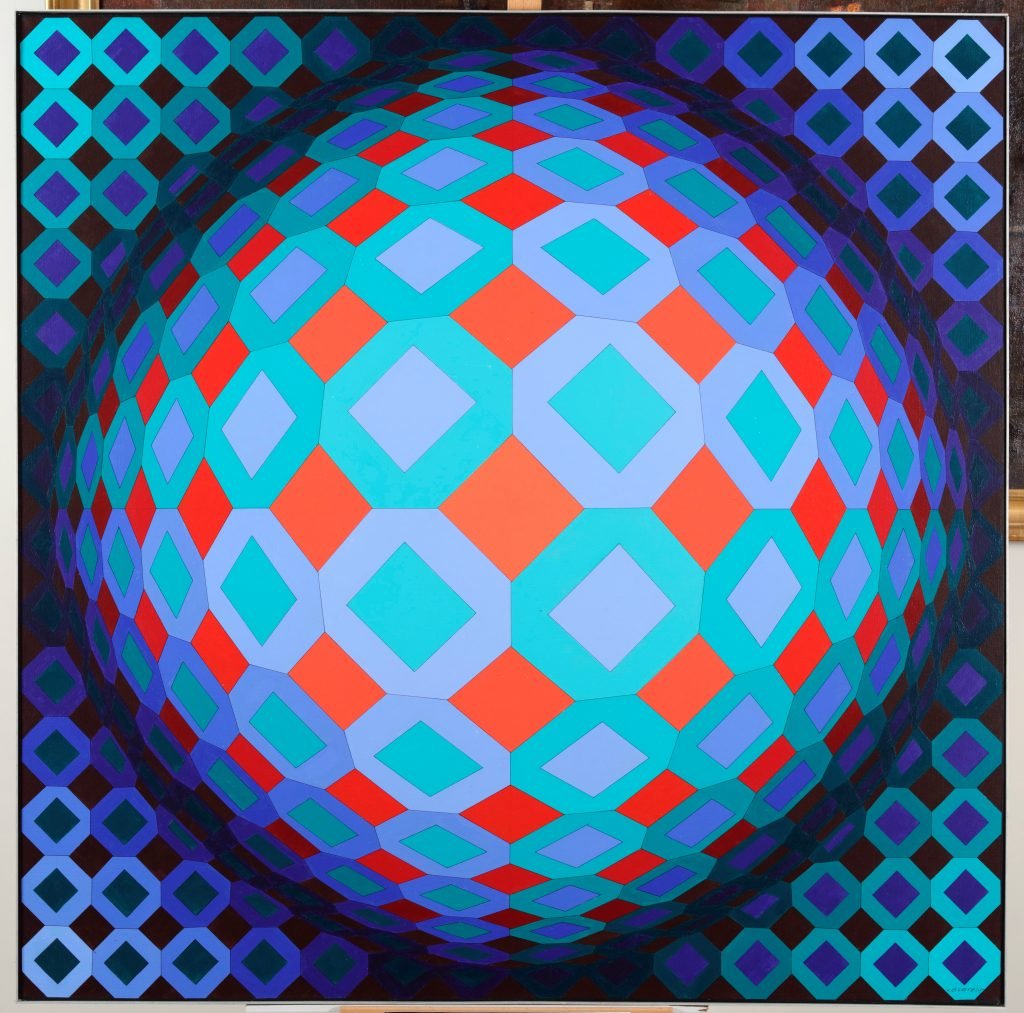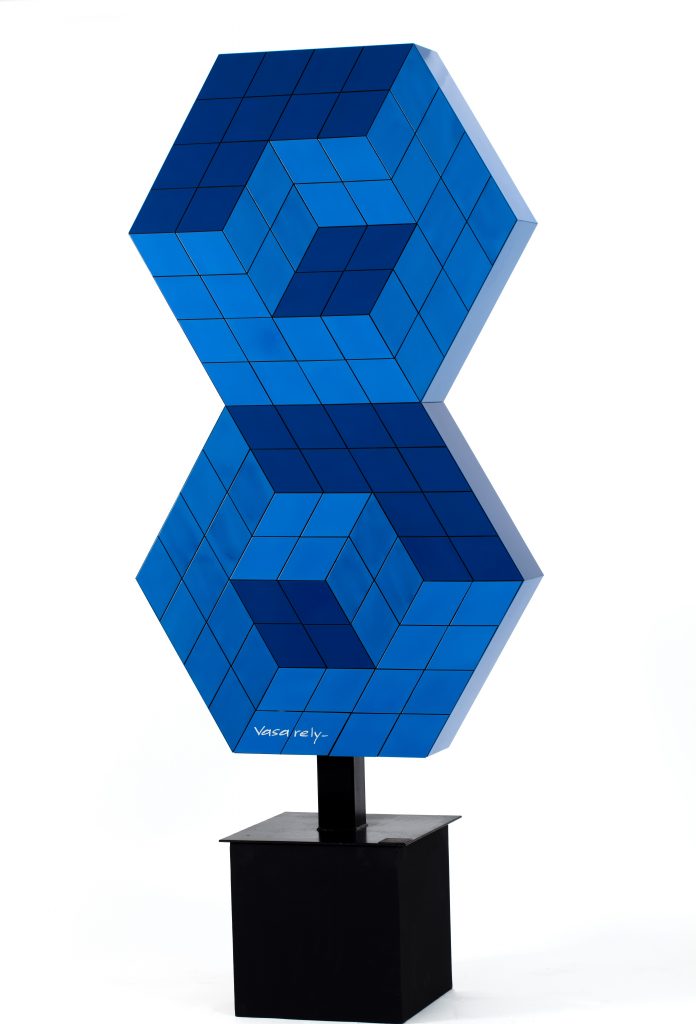Art & Exhibitions
A New Show at Selfridges Introduces an Internet-Addled Generation to the Op Art of Victor Vasarely (Don’t Worry, There Are NFTs Too)
Proceeds from the sales will help fund the restoration of the artist's work.

Proceeds from the sales will help fund the restoration of the artist's work.

Vivienne Chow

They may have been created decades ago, but Op Art pioneer Victor Vasarely’s dizzying geometric shapes and colorful graphics have never felt as relevant as they do now, in the age of digital art and NFTs. At least, that’s what an exhibition opening on Thursday at one of London’s biggest department stores strives to demonstrate.
Running until March 31 at Selfridges, the show features a total of 55 works ranging from canvases to ceramics and tapestries. It marks the first display of work by the late French-Hungarian artist in the United Kingdom in more than 50 years.
But the exhibition isn’t just about exposure—it’s also about raising money. Thirty-seven of the works—together with a series of freshly minted NFTs created by London-based NFT platform Substance—are available for sale. Proceeds will go toward the restoration of monumental works at the Fondation Vasarely Museum in Aix-en-Provence, France.
The show also features a creative partnership with fashion brand Paco Rabanne, which will be launched in a new 2022 collection inspired by Vasarely’s art at the Oxford Street store.

Victor Vasarely at Selfridges in London’s Oxford Street. Photo credit: Andrew Meredith and Selfridges.
The exhibition strives to bring the legacy of the Op Art movement pioneer to life while introducing him to a younger audience, said Pierre Vasarely, president of Fondation Vasarely.
“He wanted to promote art [through] architecture, urbanism, music, fashion, just like the way people think in recent years,” Vasarely told Artnet News. “He wanted to bring art to the city, to the streets, to everyone.”
Pierre Vasarely said his grandfather originally created the works on view, including the geometric designs gracing the storefront, by hand, before the introduction of computers. “It was revolutionary,” he said. “The NFT trend today is heading toward this direction.”

Victor Vasarely, Okta Cor (1973) Acrylic on canvas. Photo: Fabrice Lepeltier and Fondation Vasarely.
The physical works available for sale, including 15 unique works and 20 silkscreen prints, originally belonged to French collectors. A total of 12 Vasarely NFTs attached to Vasarely’s monumental works at the foundation will be released, with the first batch of six going live on February 16 and the remaining six available on March 12. Each NFT can be purchased at the London store in person or online on Subtance’s platform (and can later be accessed in the metaverse, naturally). Prices have yet to be announced.
Born in Pécs, Hungary, in 1906, Vasarely first studied medicine before venturing into painting. He moved to Paris in 1930 and began experimenting with Surrealism and Abstract Expressionism before developing his signature checkerboard paintings in the 1940s. He died at the age of 90 in 1997. He was the subject of a retrospective at Paris’s Centre Pompidou in 2019.

Victor Vasarely, Bleu n° IIIV (1970-2009). Photo: Fabrice Lepeltier and Fondation Vasarely
The artist built Fondation Vasarely between 1973 and 1976. It was declared a historic monument in 2013 and has annual attendance of around 100,000 visitors. The foundation is not the first to create NFTs based on a late artist’s work: Alphonse Mucha’s foundation debuted its own line of NFTs at the end of last year.
Pierre Vasarely said he has “no idea” how much money the sales will raise, but he hopes the project will allow more people to see Vasarely’s art, particularly in a moment when travel and gathering indoors is difficult.
“We make this exhibition at Selfridges with technology to show how contemporary his work still is today,” he said. “It is a good opportunity to imagine what Vasarely would’ve done if he had access to computers back then.”